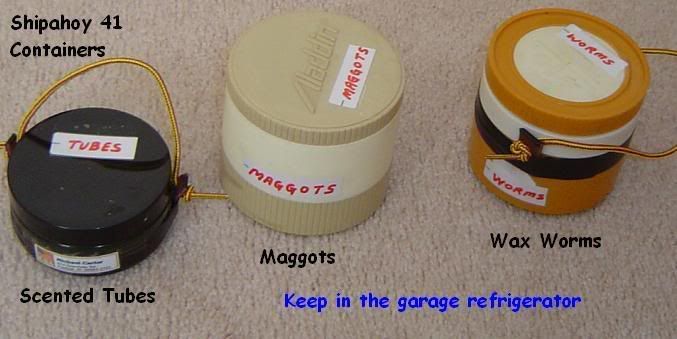this is what i am going to use for my rasing of crickets. is my sisters old fish tank. and the only thing i need to get for them is a food tray and some type of watering device. and build a cover screen for the tank, as for were i am getting my crickets from it will be this place Armstrong Crickets - decent prices on thier crickets and worms. and the have all the stuff for both.


 Likes:
Likes:  Thanks:
Thanks:  HaHa:
HaHa: 

 Reply With Quote
Reply With Quote Maggots are the number one bait for big bull bluegills. One of the keys to the effectiveness of these baits is scent, but most people don't realize this. Maggots have a tiny scent sack at the blunt end, near their eyes. If you lightly hook them through that bulge, the sack will burst and release this scent. It really triggers Panfish, especially during the mid-day hours when they're usually not actively feeding. When fish don't want minnows, maggots can be the just the ticket. Tiny jigs tipped with maggots or waxworms is the most common rigging method.
Maggots are the number one bait for big bull bluegills. One of the keys to the effectiveness of these baits is scent, but most people don't realize this. Maggots have a tiny scent sack at the blunt end, near their eyes. If you lightly hook them through that bulge, the sack will burst and release this scent. It really triggers Panfish, especially during the mid-day hours when they're usually not actively feeding. When fish don't want minnows, maggots can be the just the ticket. Tiny jigs tipped with maggots or waxworms is the most common rigging method.


















